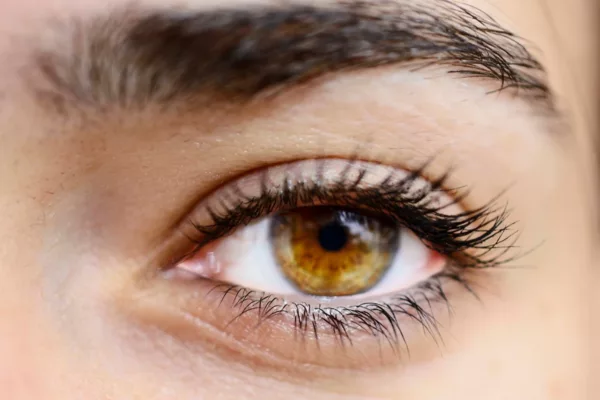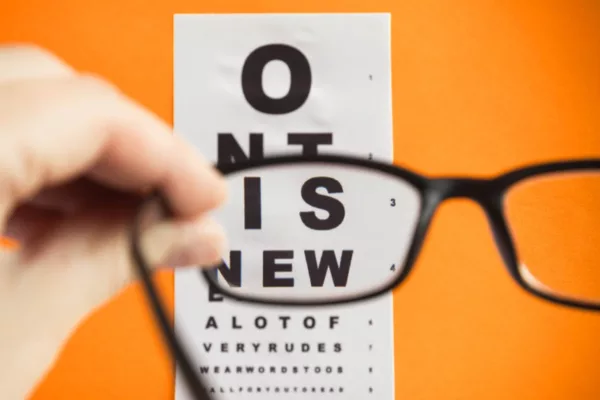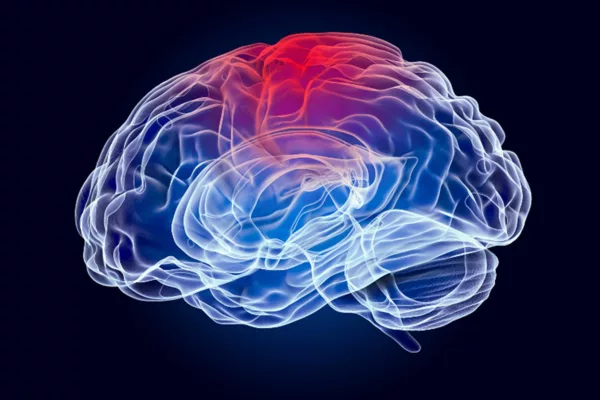Post-concussion vision complications are a significant health concern that can occur after a person experiences a concussion, a type of traumatic brain injury. These complications can range from mild to severe and may last for a brief period or become chronic. They are often caused by damage to the parts of the brain that control visual processing and perception.
Common vision problems post-concussion include blurred or double vision, light sensitivity, difficulties with eye-tracking, abnormal eye movements, and in some cases, partial vision loss. These symptoms can impact daily activities such as reading, driving, and even balance and coordination.
Understanding these complications, their symptoms, and treatment options is crucial for effective recovery and management. This understanding also helps in minimizing the impact on an individual’s quality of life. It’s important to note that everyone’s experience with post-concussion vision complications can vary widely, hence, personalized care and attention are often required.
Understanding vision problems post-concussion is crucial for several reasons:
- Early Identification: Recognizing the signs and symptoms of vision problems can lead to early diagnosis and treatment. This can potentially minimize the severity and duration of the symptoms.
- Effective Treatment: Understanding these issues can help healthcare providers develop a more effective, personalized treatment plan that addresses the specific vision problems experienced by the individual.
- Prevention of Further Complications: If left untreated, post-concussion vision problems can lead to other complications, such as difficulties with balance, headaches, and problems with concentration. By understanding these vision problems, individuals can take steps to prevent these secondary issues.
- Improved Quality of Life: Vision problems can significantly impact an individual’s daily activities and quality of life. Understanding these problems can help individuals and their healthcare providers take steps to manage these issues effectively, thus improving overall well-being.
- Progress Monitoring: Understanding vision problems post-concussion also allows for better monitoring of progress throughout recovery. It helps in assessing the effectiveness of treatments and making necessary adjustments for optimal outcomes.
Understanding Concussions
Definition and causes of concussions
A concussion is a type of traumatic brain injury (TBI) that affects your brain function. It’s usually caused by a blow to the head or a violent shaking of the head and body. While concussions are typically not life-threatening, their effects can be serious and potentially long-lasting.
The causes of concussions can be categorized into two main groups: contact and non-contact incidents.
- Contact Incidents: These include direct blows to the head, face, or neck or elsewhere on the body with an impulsive force transmitted to the head. Such incidents can occur during sports like football, boxing, or hockey, or due to accidents such as car crashes or falls.
- Non-Contact Incidents: These involve instances where the head and body are violently shaken even without a direct impact to the head. For example, being close to a blast or explosion, or whiplash-type injuries where the head is jerked back and forth.
Concussions can result in temporary loss of normal brain function, causing symptoms like headaches, confusion, lack of coordination, memory loss, and changes in personality. In some cases, concussions can also lead to post-concussion syndrome, which involves long-term symptoms, and in rare cases, repeated concussions can lead to chronic traumatic encephalopathy, a degenerative brain disease.
Common symptoms and effects of a concussion
Concussions can have a wide range of physical, cognitive, and emotional symptoms. The effects can be immediate or may not appear until days or even weeks after the injury. It’s also important to note that you don’t need to lose consciousness to have a concussion.
Physical Symptoms:
- Headache or a feeling of pressure in the head
- Temporary loss of consciousness
- Confusion or feeling as if in a fog
- Amnesia surrounding the traumatic event
- Dizziness or “seeing stars”
- Ringing in the ears
- Nausea or vomiting
- Slurred speech
- Fatigue
- Blurred vision or light sensitivity
Cognitive and Emotional Symptoms:
- Memory problems
- Difficulty thinking clearly or concentrating
- Feeling slowed down
- Mood changes, such as irritability, depression, or anxiety
- Sleep disturbances, including sleeping more or less than usual
Effects on Children: In young children, symptoms can include:
- Listlessness, lack of energy
- Irritability
- Changes in eating or sleeping patterns
- Loss of balance or unsteady walking
- Difficulty with attention
It’s crucial to seek medical attention if you or someone else has symptoms of a concussion following a blow or jolt to the head.
The connection between concussions and vision problems
Concussions can significantly impact vision, with children and adolescents experiencing symptoms such as blurred vision, light sensitivity, and double vision right after the incident. Studies indicate that a large percentage of individuals who have had concussions experience visual issues, including eyestrain and blurred or double vision.
The common vision-related symptoms following a concussion include:
- Double vision
- Inadequate eye tracking ability
- Trouble shifting gaze rapidly from one point to another
- Sensitivity to glare or light
- Eye strain or discomfort
- Difficulty in reading
In some instances, these vision problems can persist, leading to blurred or double vision, eye pain, and challenges with close-up tasks. These symptoms can severely disrupt everyday activities, including work, school, and leisure.
Another possible visual complication after a concussion is slowed or delayed eye movements. This could result in difficulties in tracking moving objects or swiftly shifting the gaze from one point to another.
The connection between concussions and vision problems
Concussions can significantly impact vision, with children and adolescents experiencing symptoms such as blurred vision, light sensitivity, and double vision right after the incident. Studies indicate that a large percentage of individuals who have had concussions experience visual issues, including eyestrain and blurred or double vision.
The common vision-related symptoms following a concussion include:
- Double vision
- Inadequate eye tracking ability
- Trouble shifting gaze rapidly from one point to another
- Sensitivity to glare or light
- Eye strain or discomfort
- Difficulty in reading
In some instances, these vision problems can persist, leading to blurred or double vision, eye pain, and challenges with close-up tasks. These symptoms can severely disrupt everyday activities, including work, school, and leisure.
Another possible visual complication after a concussion is slowed or delayed eye movements. This could result in difficulties in tracking moving objects or swiftly shifting the gaze from one point to another.
It’s crucial to note that while some individuals may believe their vision deficit is due to an issue with their eyes, the problem often originates from the brain’s processing of visual information. Understanding this link between concussions and vision problems is key to effective treatment and recovery.
Vision Problems After a Concussion
Vision problems can often occur after a concussion, which is a type of traumatic brain injury (TBI). These visual symptoms may be temporary or persistent and can significantly affect an individual’s daily life.
One of the most common post-concussion vision disorders is blurred vision. This condition, along with light sensitivity and double vision, has been reported in up to 40% of children and adolescents immediately after a concussion. It’s also worth noting that even mild concussions can lead to visual disturbances.
In addition to blurred vision, other visual symptoms can include difficulties with eye tracking, convergence insufficiency (inability to maintain binocular vision), and difficulty focusing. All these issues can contribute to ongoing visual symptoms and discomfort.
Head trauma from a concussion can also impact the visual system by damaging the eyes themselves, the muscles that surround the eyes, or parts of the brain involved in vision. This can lead to a condition known as post-trauma vision syndrome, characterized by double or blurred vision, eye strain, and headaches.
Delayed or slow eye movements, another potential issue following a concussion, can cause difficulties in tracking moving objects, also known as pursuits. This can severely affect tasks that require quick eye movements, such as reading or watching a computer screen.
Most of the time, vision problems caused by concussions should gradually fade after a couple of weeks. However, for some individuals, these symptoms may persist for months or longer. In such cases, vision therapy can be an effective treatment method to improve visual skills and alleviate symptoms.
In some severe concussion cases, damage to brain cells can lead to more serious issues like vision loss or optic nerve damage. Therefore, it’s crucial to seek immediate medical attention after a head injury, even if it seems mild. An eye doctor or other appropriate specialists can conduct a thorough examination to assess the extent of the injury and recommend suitable treatments.
Understanding the connection between concussions and vision problems is an essential aspect of sports medicine. Early identification and treatment of post-concussion vision disorders can help prevent academic difficulty, especially in the pediatric population, and facilitate a quicker return to normal activities.
Prevalence of vision problems post-concussion
Research shows that at least 50% of traumatic brain injury patients suffer from visual dysfunctions. Some studies suggest the prevalence of vision problems after concussions may even be as high as 69%. This underscores the significant impact concussions can have on our visual system.
The symptoms can vary greatly and may include blurred vision, double vision, difficulty reading, and eye strain or pain. In many cases, these visual problems emerge in the first 1–2 weeks after a concussion and usually resolve on their own. However, if they do persist, it may indicate a condition known as post-trauma vision syndrome, which requires further medical attention.
Often, individuals may believe their vision deficit is due to an issue with their eyes, but the problem often lies in the brain’s processing of visual information. Concussions can negatively impact the brain’s ability to process visual cues, leading to the aforementioned symptoms.
Given the prevalence and potential impact of vision problems after a concussion, early detection and appropriate treatment are crucial. If you or someone you know experiences visual symptoms following a concussion, it’s important to seek medical help promptly. Treatment options can range from rest and medication to specialized therapies for more persistent or severe cases.
Types of Vision Problems That Can Occur After a Concussion
A concussion, a form of mild traumatic brain injury, can lead to several vision problems. The severity and duration of these problems can vary greatly from person to person. Let’s take a closer look at some of the common types of vision problems that can occur after a concussion.
1. Blurred Vision
Blurred vision is one of the most common symptoms following a concussion. This can make it difficult to focus on objects or text, which can impact daily tasks such as reading, driving, or even just navigating around your home or workplace.
2. Double Vision
Double vision, also known as diplopia, can be another troubling symptom post-concussion. Individuals experiencing this may see two images of a single object, either all the time or only under certain conditions. This can cause disorientation and balance problems and can significantly affect an individual’s quality of life.
3. Light Sensitivity
Light sensitivity, or photophobia, is a condition where bright lights cause discomfort or pain. This can be particularly problematic in environments with fluorescent lighting or while using digital screens. Wearing sunglasses or special tinted glasses can help manage this symptom.
4. Poor Eye Tracking Ability
Poor eye tracking ability can cause difficulty when trying to follow moving objects with the eyes or when shifting focus between different objects. This can make activities like reading or watching television challenging and may even affect coordination and balance.
5. Abnormal Eye Movements
Abnormal eye movements, also known as nystagmus, involve involuntary movements of the eyes. These movements can be horizontal, vertical, or circular. Nystagmus can cause vision to appear shaky or unstable and can lead to problems with balance and coordination.
6. Partial Vision Loss
In rare cases, a concussion can result in partial vision loss. This can manifest as blind spots in the field of vision or even total loss of vision in one eye. This is a serious symptom that requires immediate medical attention.
Duration of Vision Problems
The duration of vision problems following a concussion is highly variable and dependent on a number of factors, including the severity of the injury, the individual’s overall health, and the type of visual disturbance experienced.
In many cases, symptoms like blurred vision, double vision, and light sensitivity can resolve within a few days to a week after the injury. However, in some cases, these symptoms may persist for several weeks to months.
A smaller percentage of individuals may experience persistent post-concussion syndrome, where symptoms last for more than three months. In rare instances, some people may continue to experience vision problems a year or more after their concussion.
It’s essential to note that any persistent vision issues following a concussion should be evaluated by a healthcare professional. Early intervention and appropriate treatment can help manage these symptoms and aid in recovery.
Evaluation and Diagnosis
Medical evaluation following a concussion:
Identifying Serious Conditions: An initial assessment post-concussion is crucial to determine if there are any serious medical issues that need immediate attention. Certain abnormalities related to the trauma might develop within the first 24 hours after the injury, which makes an immediate evaluation critical.
Assessing Severity and Symptoms: A comprehensive neurological examination is required, even for injuries that appear less severe. Tests designed specifically for concussions can assess brain function post-trauma, checking for symptoms like memory problems, cognitive difficulties, among others.
Monitoring Recovery: Although most patients fully recover from their symptoms, it’s important to monitor progress. Persistent cognitive problems could be a sign of complications such as headaches, pain, or sleep disorders.
Guiding Return-to-Play Decisions: For athletes, a medical evaluation is particularly significant in determining when it’s safe to return to sports activities. Screening tools are available to assess risks associated with head injuries.
Preventing Long-Term Complications: Early and appropriate management of concussions can help prevent long-term complications. Regular follow-ups and evaluations ensure that any continuing or new symptoms are promptly addressed.
How vision problems are diagnosed post-concussion
Diagnosing vision problems after a concussion requires an in-depth examination of the patient’s symptoms and specific eye tests.
Signs of vision complications following a concussion can range from difficulty reading, blurred vision, trouble focusing, to fatigue in the eyes. More serious symptoms may include double vision (diplopia), decreased attention to visual tasks, irregularities in pupil response, and increased abnormal eye tracking movements.
The diagnostic process usually includes several tests:
Eye Tracking Test: This test helps identify issues with moving the gaze quickly from one point to another.
Focusing Test: This test evaluates the patient’s capacity to sustain clear vision at varying distances.
Binocular Vision Test: This test is used to check for any loss in binocular vision, which is the ability to focus on an object with both eyes, forming a single visual image.
Light Sensitivity Test: This test gauges the patient’s sensitivity to light, a symptom that is commonly reported following a concussion.
Signs that suggest a bigger problem
If certain symptoms persist after a concussion, it could hint at a more grievous problem. These lingering symptoms might indicate post-concussion syndrome.
Common signs include:
Headaches: The most frequent symptom following a concussion. If the headaches continue, it could point to a deeper issue.
Dizziness or Balance Issues: Consistent dizziness or problems with balance could suggest a severe brain injury.
Feeling Slowed Down: If you constantly feel like your thinking or physical movements are slower than usual, it might be a sign of a more serious condition.
Difficulty Concentrating or Memory Problems: Struggles with concentration or memory that last for weeks to months could imply post-concussion syndrome.
Personality Changes or Mood Swings: Any personality changes or unexplained mood swings could be indicative of a more significant issue.
Vision Problems: Damage to the nerves or muscles around the eyes that leads to blurred or double vision could be a sign of a more serious problem.
Light Sensitivity or Unusually Sized Pupils: These could also be signs of a more serious issue.
Treatment and Management
Managing and treating symptoms after a concussion typically involve the following steps:
Rest and Recovery: The most critical treatment for a concussion is rest. This includes both physical rest, to help the brain recover from the injury, and cognitive rest, to help with symptoms such as headache and difficulty concentrating.
Gradual Return to Activities: Once acute symptoms have resolved, individuals can gradually return to their normal activities. This should be done slowly, and any increase in symptoms should signal a need to slow down or temporarily reduce activity level.
Medication: Over-the-counter pain relievers may be used to manage headaches. However, it’s important to avoid medications that thin the blood unless prescribed by a doctor.
Rehabilitation Therapies: Depending on the symptoms, different types of rehabilitation may be needed. This could include physical therapy for balance and coordination issues, occupational therapy for difficulties with daily tasks, or speech-language therapy for problems with speaking or understanding language.
Cognitive Behavioral Therapy (CBT): For individuals struggling with mood changes or anxiety after a concussion, cognitive behavioral therapy can be helpful. CBT can provide strategies to cope with these changes and improve mental well-being.
Vision Therapy: If there are ongoing vision problems, vision therapy with a specialist may be needed.
Typical recovery timeline for vision problems post-concussion
The timeline for recovery from vision problems after a concussion can vary widely depending on the severity of the injury, the specific symptoms, and the individual’s overall health. However, most people start to see improvement in their symptoms within a few weeks to months.
For some, vision problems may resolve within days. For others, it might take several weeks or months. In some cases, individuals may experience persistent vision problems that last for a year or more.
During this recovery period, it’s important to work closely with healthcare providers, including optometrists or ophthalmologists who specialize in neuro-visual rehabilitation. They can provide strategies and exercises to help improve vision and manage symptoms.
Remember, everyone’s recovery is unique. It’s important to be patient with the process and to seek regular medical follow-up to monitor progress and adjust treatment plans as needed.
Treatments available for vision problems caused by concussions
Various treatments are available to address vision problems caused by concussions. The specific treatment recommended will depend on the nature and severity of the symptoms, as well as the individual’s overall health.
One commonly used method is vision therapy. This involves a series of exercises designed to improve coordination and focusing. The goal of vision therapy after a brain injury is to restore the patient’s visual function, much like other forms of rehabilitation
Another technique used in treatment is visual-vestibular rehabilitation. This type of therapy is often administered by specialized optometrists, referred to as neuro-optometrists.
Other treatments can include:
- Patching: This involves placing a patch on one eye or part of the visual field of one eye. This can help to improve focusing and coordination (source: Optometrists.org).
- Prism Lenses: These special lenses can help to correct issues with depth perception and visual alignment (source: Optometrists.org).
In addition to these treatments, it’s crucial for individuals experiencing vision problems after a concussion to have regular check-ups with their healthcare provider to monitor progress and adjust treatment plans as needed.
Most vision problems after a concussion resolve on their own within a few weeks. However, some individuals may continue to have vision issues beyond this period (source: Healthy Children).







